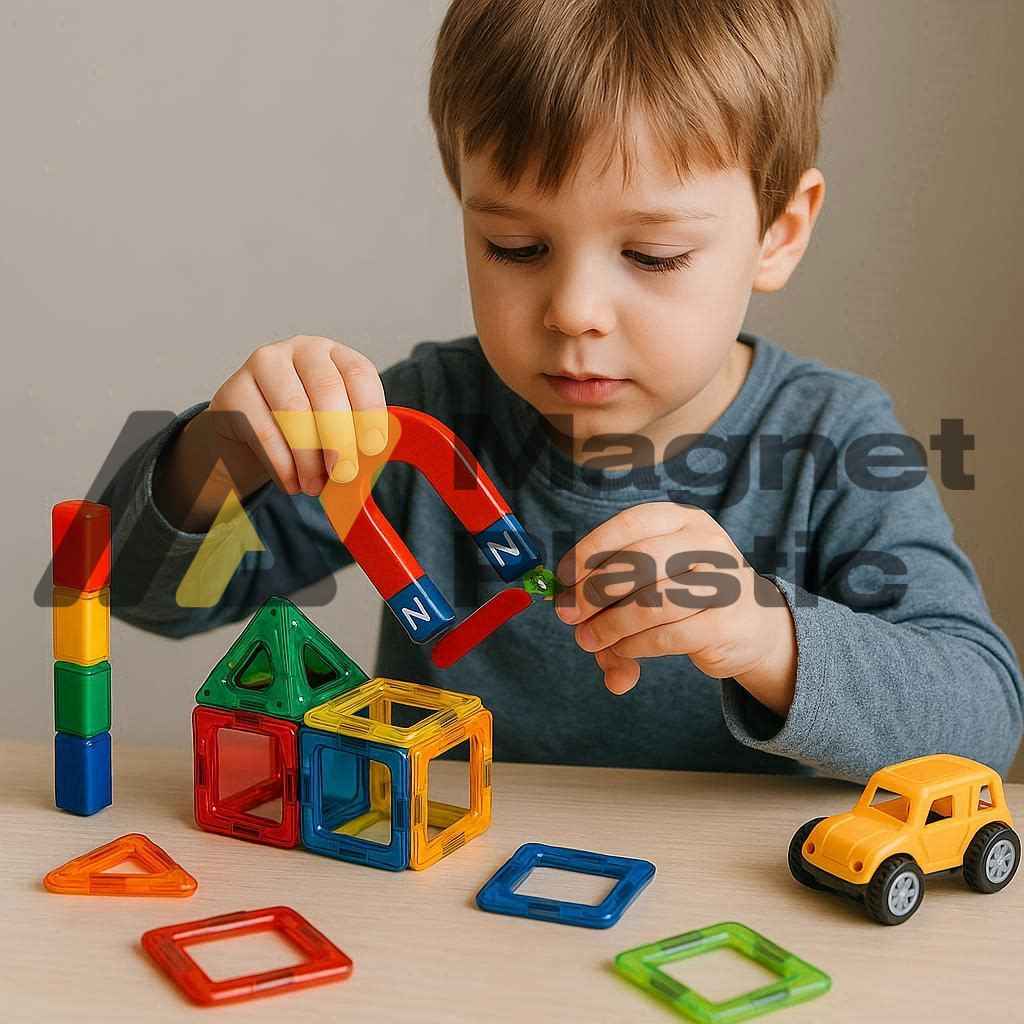The Use of Magnets in Toys: Innovation, Learning, and Fun
The use of magnets in toys is not a new concept, but over the past few decades, it has revolutionized the way children and adults play and interact with their entertainment objects. From simple magnetic building sets to complex systems with movement mechanisms, magnetism has added a new dimension to play. In the toy industry, magnets have become an essential component in the development of products that promote creativity, learning, and educational fun.
Applications of Magnets in Toys
Magnets are used in a wide range of toys for both recreational and educational purposes.
Magnetic construction toys: allow children to create different shapes and structures easily and flexibly. Magnetic attraction simplifies assembly while promoting motor coordination and creativity.
Dolls and figures: in many cases, magnets are used to attach interchangeable parts such as arms, clothing, or accessories, making playtime more customizable.
Puzzles and board games: magnets help keep pieces together, preventing loss or disorganization, and can also create movement or connection effects.
Motion systems: some vehicles or robots use magnets in their mechanisms to move or articulate more smoothly.
Hidden functionality: magnets can also be integrated inside toys to activate secret mechanisms, such as doors, lights, or special movements.
Educational Benefits of Magnetism
Magnetism in toys provides countless learning opportunities.
Cognitive and motor development: by handling magnetic pieces, children strengthen fine motor skills, improve hand-eye coordination, and stimulate logical thinking.
Learning physics concepts: playing with magnets introduces practical ideas such as attraction, repulsion, and polarity in a fun way.
Promoting STEM thinking: magnetic toys are excellent tools for sparking interest in science, technology, engineering, and mathematics.
Creativity stimulation: magnets allow endless possibilities for building, dismantling, and rebuilding, encouraging experimentation and imagination.
Types of Magnets Used in the Toy Industry
The toy industry mainly uses two types of magnets:
Neodymium magnets: extremely powerful and compact, ideal for construction toys and model kits. Their magnetic strength ensures firm connections while remaining easy to separate.
Ferrite or ceramic magnets: less powerful but more affordable and durable, perfect for magnetic boards, educational letters, and basic learning games.
Additionally, flexible magnetic strips are used on flat surfaces or interactive boards, maintaining their magnetism without the need for an external energy source.
Iconic Example: Magformers
One of the most well-known examples of magnet use in toys is Magformers, a construction system based on flat geometric shapes with magnets embedded in the edges. These magnets allow pieces to connect from any angle, creating stable and dynamic 3D structures.
The magic behind Magformers lies in its neodymium magnets, whose strength ensures firm connections while allowing infinite reconfigurations. This balance between strength and flexibility has made Magformers a global reference in the world of magnetic educational toys.
Conclusion
Magnetism has transformed the world of play by offering experiences that combine fun and learning. Magnets in toys not only entertain — they also inspire children to explore scientific principles, develop motor skills, and unleash their creativity. Whether through powerful neodymium magnets or versatile ferrite magnets, the magic of magnetism will continue to inspire and fuel the imagination of future generations.
